1964 Lincoln Penny Values, Errors, and Rarities
The 1964 penny value depends mainly on the condition of the coin. Prices can range from several dollars to as high as four figures. You can find a complete breakdown of values in the section below.
From the original 1909 Lincoln Wheat cent to 1982, all Lincoln cents were made from 95% pure copper. Lincoln cents struck since 1982 have been made from zinc with a thin copper coating.
At current copper prices (November 2023), a 1964 Lincoln cent has a melt value of 2.3 cents. Note that the clad zinc Lincoln cents struck since 1982 have a melt value of only 0.65 cent.
1964 Lincoln Penny Prices
The most valuable Lincoln cents are those earning the highest “Mint State” ratings from certified coin grading services. The standard grading fee for modern coins is $17 at PCGS and $19 at NGC, the top two coin grading services. (Bulk submissions can bring down the per-coin cost.) This means that only the nicest 1964 Lincoln cents are worth getting graded.
DID YOU KNOW?
Coins are graded on a 70-point scale, where 1 is so worn as to be almost unidentifiable, and 70 is perfect, with no damage or blemishes visible even under magnification. Learn more by reading our guide to coin grading.
Below are the prices as of November 2023 for high-quality “Mint State” 1964 Lincoln cents. Prices were obtained through PCGS Coinfacts.
1964 LINCOLN CENT VALUE
MINTAGE: 2,648,575,000 (Philadelphia and San Francisco combined mintage)
1964-D LINCOLN CENT VALUE
MINTAGE: 3,799,071,500
1964 PROOF LINCOLN CENT VALUE
MINTAGE: 3,950,762
History of No Mintmark 1964 Penny: East Coast, or West Coast? Nobody Knows!
Nearly 6.5 billion Lincoln cents were minted in 1964 between the Philadelphia, Denver, and San Francisco Mints.
Only Lincoln pennies struck at the Denver Mint carried a mint mark for 1964. We know from Mint records that 196,630,000 1964-dated Lincoln cents were struck at the San Francisco Mint, but they did not have a mint mark. This makes them indistinguishable from the ones struck in Philadelphia.
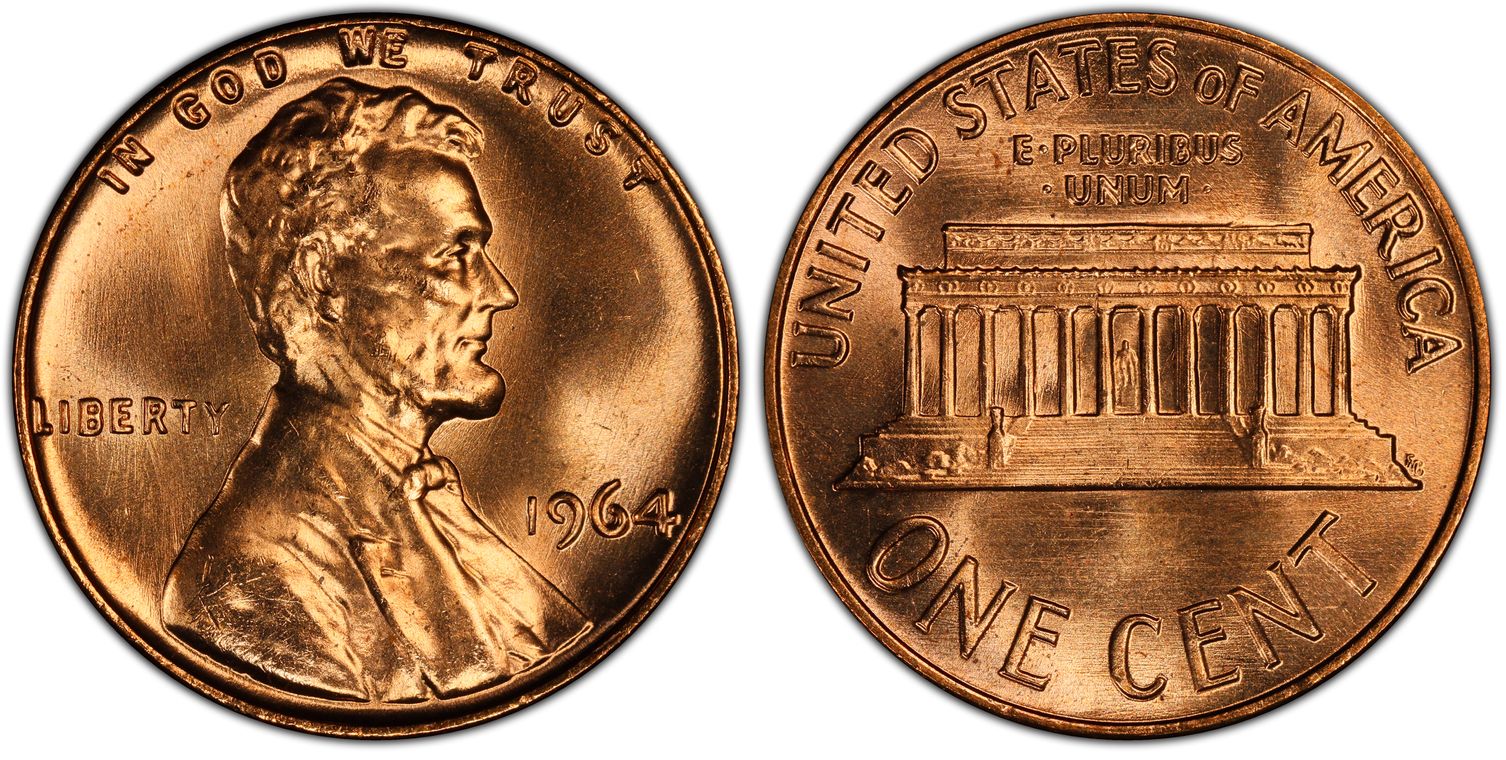
A 1964 Lincoln cent, graded MS67+ RD by PCGS
1964 Coin Mint Marks: A Victim of the National Coin Shortage
Until 1965, all dimes, quarters, half dollars, and dollar coins were made with 90% pure silver. As silver prices rose in the early 60s, the value of the silver content of these cons exceeded their face value. As silver prices continued to rise, more people hoarded every silver coin that they could get their hands on. The economy began grinding to a halt. The US Mint could not keep enough coins in circulation. As metals prices rose, the Lincoln cent, with its 95% pure copper content, also came to the attention of the hoarders.
Since “silver stackers” (people hoarding coins for their bullion value) were creating a shortage of all types of coins, coin collectors could not find nice 1960s coins in circulation. They bid up prices for high-quality coins in the secondary market, leading government officials to blame collectors, not silver hoarders, for the coin shortage.
Director of the US Mint Mary Adams decided in 1964 that removing mint marks from all US coins would reduce demand from collectors. As a result, the only 1964 coins to carry a mint mark were the Lincoln cents struck at the Denver Mint. From 1965 to 1967, no US coins carried a mint mark. Mint marks returned in 1968 after the coin shortage was considered over.
1964-D Lincoln Cents
The 1964-D Lincoln cent was the only US coin to carry a mintmark that year. This value added by this feature is somewhat offset by the fact that the Denver Mint produced more 1964 Lincoln cents than the Philadelphia and San Francisco Mints combined. This means that the 1964 “no mint mark” and D mint mark coins are similar in value.
RD, RB, BN: What Do They Mean?
Lincoln cents are not only graded by condition but also by how much of their original color remains. There are three classifications: Brown (BN), Red-Brown (RB), and Red (RD).
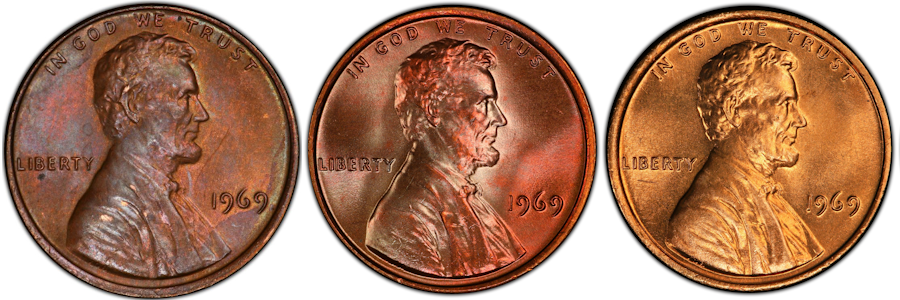
1969 Lincoln cents graded BN, RB, and RD (PCGS)
These definitions are more subjective than the physical grades laid out in the 1-70 coin grading scale.
Circulated cents and uncirculated ones exposed to air develop a brown, sometimes chocolatey color. All things being equal, cents graded BN are far less desirable to collectors than RB or RD coins. Red-brown cents have a good portion of their original luster remaining. Some collectors find that certain RB cents can have more eye appeal than a “better” RD coin of the same condition grade. Red coins have almost all their original luster present. For older cents, this is usually only possible for new coins kept in rolls or airtight containers or from unopened Mint Sets.
Most Valuable 1964 Lincoln Cents: Auction Records and Finest Known
This is a list of the finest-known examples of each 1964 Lincoln cent mintage. The auction records listed may or may not reflect the highest price ever paid, since person-to-person private sales are not recorded.
The numbers in the PCGS and NGC entries are the number of coins at that grade that each service has graded. The year and auction house are also listed.
1964 LINCOLN CENT VALUE
AUCTION RECORD: $7,931 for MS-67 RD (2010, Bowers & Morena)
FINEST KNOWN: MS-67+ RD (4, PCGS); MS-66 RD (1, NGC)
1964-D LINCOLN CENT VALUE
AUCTION RECORD: $4,025 for MS-67 (2012 - Stacks Bowers)
FINEST KNOWN: MS-67+ RD (3, PCGS); MS-66 RD (3, NGC)
1964 PROOF LINCOLN CENT VALUE
AUCTION RECORD: $2,585 for PR-70 (2017 - Heritage)
FINEST KNOWN: PR-70 (10, PCGS); PF-69 (3,804, NGC)
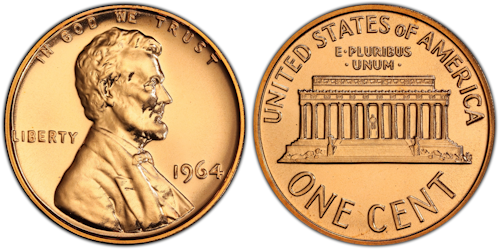
A perfect PR70 RD 1964 Proof Lincoln Cent (PCGS)
1964 SMS Lincoln Cent
The 1964 Special Mint Set Lincoln cents were part of an experiment into a replacement for Mint Sets and Proof Mint Sets during the national coin shortage. Special Mint Sets had special satin-finish coins and were sold from 1965 to 1967. Due to the national coin shortage, SMS sets only had one coin of each denomination, with no mintmarks. (Mint Sets usually have a sample of each denomination from each mint.) The satin finish to these coins are unlike Proof or circulation coins, and are designated by the SP “specimen finish” abbreviation.
The 1964 Special Mint Sets were never released to the public. They were discovered in the coin collection of Mint Director Eva Adams after her death in 1991. Over the years, many of these sets have been broken up to have the coins individually graded. There may be less than 50 intact 1964 Special Mint Sets left. PCGS has graded 20 1964 SMS Lincoln cents, while NGC has seen just 11.
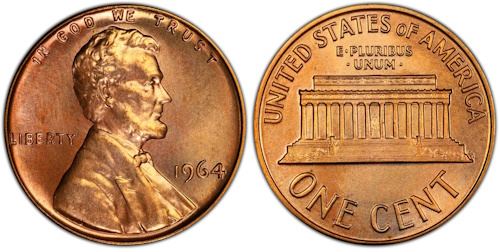
1964 Special Mint Set Lincoln cent, graded SP68 RD (PCGS)
1964 SMS LINCOLN CENT VALUE
AUCTION RECORD: $15,600 for SP-67 RD (2019 - Heritage)
FINEST KNOWN: SP-68 RD (2, PCGS); SP-67 RD (1, NGC)
1964 Lincoln Cent Varieties and Errors
Variety coins are coins that have had something happen to the die before the coin is struck. Common coin varieties include Doubled Die on Reverse (DDR), Doubled Die on Obverse (DDO), and Repunched Mint Mark (RPM.)
The difference between variety coins and error coins is that variety coins result from a mistake on the coin die. Many hundreds or even thousands of coins with the same defect can be minted before the mistake is noticed.
The only 1964 Lincoln cent variety of note is the 1964 DDR. This is not an exceedingly rare coin. The doubling can best be seen in the “States of” part of the inscription “United States of America” along the upper rim on the reverse.
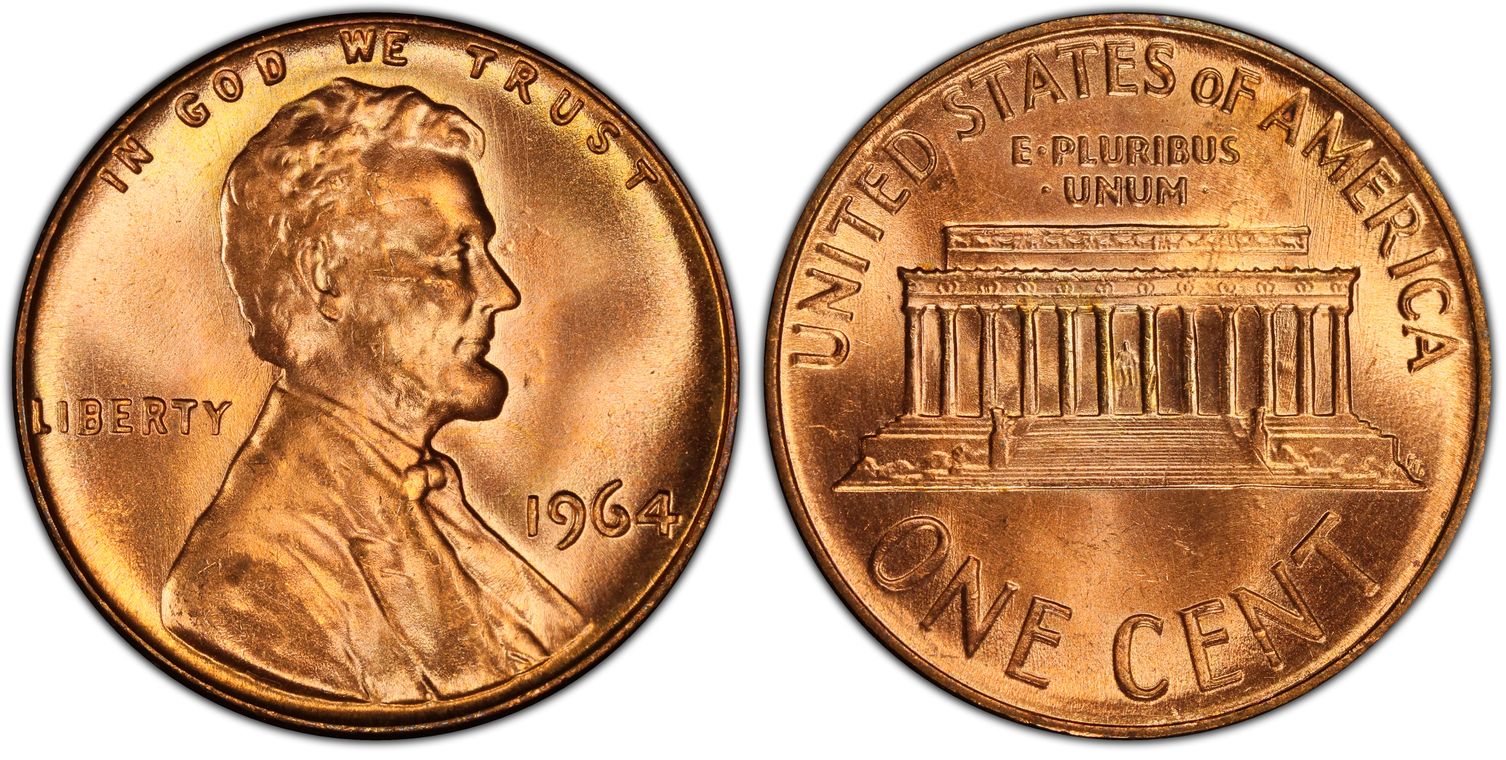
1964 Lincoln Cent DDR MS66 RD (PCGS)
1964 DDR LINCOLN CENT VALUE
AUCTION RECORD: $187 for MS-64 RD (2012 - Great Collections)
Error coins are a result of a mechanical malfunction of the coin press or a defect or mistake in the coin blank itself. (Anything that happens to them after they are ejected from the coining press is referred to as “post-mint damage.”)
Common error coins are:
Read more about collecting coins from the numismatic experts at Gainesville Coins:
Collector Resources for Understanding the Hobby of Collecting Coins
1968 Lincoln Penny Values, Errors, and Rarities
1969 Lincoln Penny Values, Errors, and Rarities
1982 Bronze and Clad Lincoln Cent Guide
2009 Lincoln Penny Bicentennial Cents: Value, Errors, and Designs
1943 Steel Penny Value: How Much They Are Worth Now

Steven Cochran
A published writer, Steven's coverage of precious metals goes beyond the daily news to explain how ancillary factors affect the market.
Steven specializes in market analysis with an emphasis on stocks, corporate bonds, and government debt.
